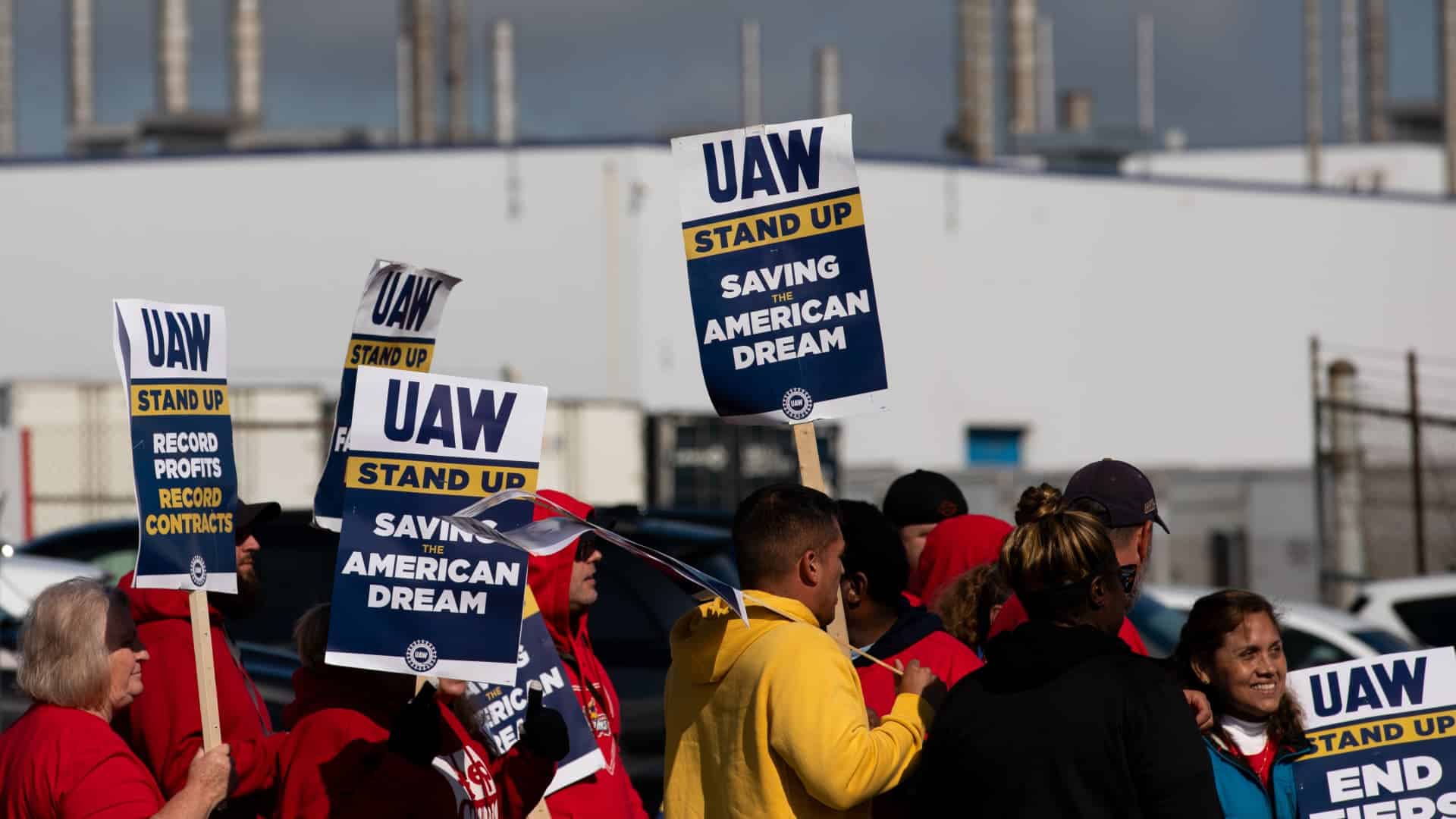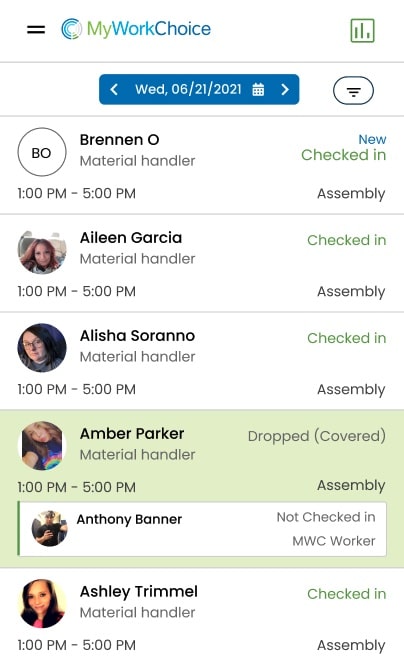
The Four-Day Workweek Debate
The concept of a four-day workweek is gaining traction, especially in white-collar corporate America. Now, it’s a top demand from the United Auto Workers (UAW) union. There are a lot of strong opinions on this so we’re going to set aside the pro/anti-union debate for a moment and just tackle the real question – is it even operationally possible for a manufacturing facility to allow workers to have a 32-hour workweek and still meet production goals?
Real-World Challenges: Where the Rubber Meets the Road
The biggest issue is that the operational math seems impossible. You can’t just crank up the assembly line speed by 20% to compensate. Yes, it’s proven that workers on a reduced schedule will be more efficient, but not enough to make up the 20% difference in work hours. But does that seal the fate of the four-day workweek in manufacturing?
The Short Answer? No.
Let’s talk about two existing models that attempt a Four-Day workweek.
The Fixed Four-Day Model
- Workers clock in for four 10-hour shifts and enjoy a three-day weekend. The facility shuts down for those three days. We’ve seen manufacturers who’ve pulled this off with mixed results.
- The challenge is when someone doesn’t show up for a shift, you’ve now lost 10 critical hours of production that can’t be made up on the days you’re closed.
The Rotating Four-Day Model
- Workers also clock in for four 10-hour days, but their days off are staggered to ensure continuous production.
- Here, the challenge is managing complicated schedules, especially for facilities that are north of 500 employees. In addition, absenteeism still creates a 10-hour loss.
Consider this: the average U.S. non-farm worker is clocking only 34.4 hours a week despite mandatory overtime and strict attendance policies. That’s right—despite all the efforts to make employees work more hours, people still take more time off than what’s allowed. So, now what?
Between a Rock and a Hard Labor Market
It’s not just about hours and shifts; it’s about human behavior and the change in labor dynamics. We sat down with Federal Reserve Bank economist Laura Ullrich on our Shift Talk podcast and she explained “…people want to work, but things look different than what they did before. And if companies want to survive, they need to adapt.”
Listen to the Shift Talk podcast episode with FED economist, Laura Ullrich.
There are hundreds of job openings in every market for the frontline workforce, with many offering immediate employment. And you have gig work pulling many of these folks to an incredibly attractive “work-when-you-want” schedule. Why? Because people’s lives are fluid.
Manufacturing has been locked in a “six-sigma” mindset for decades. You calculate how many work hours are needed to produce X number of products (vehicle, tool, widgets, etc.) and how many fixed 40-hour workers are needed to ship that order. But that’s not today’s reality. People don’t have lives that can support rigid schedules and constant overtime. They need fluidity in their schedule to fit the fluidity in their lives.
In response to seeing workers take more unapproved time off, manufacturers have reacted by making shifts longer – 10, 12, and even 16 hours – and mandating overtime to make up the difference. Instead of fighting against the tide, what you really need is a solution that gives workers what they want (flexibility) while still getting the total hours of production you need (efficiency).
A Win/Win Third Option: Flexibility is Key
Here’s where we move to a new model that might sound counterintuitive but actually works (and has multiple upside benefits for the company). Here’s how it works:
Full-time with Flexibility
- Full-time workers start with a standard 40-hour week.
- You maintain standard start times but offer full and half-length shifts.
- Employees can take a day off, swap shifts, or add days for overtime pay – as long as they maintain at least 32 hours a week.
The Backup Pool
- A supplementary team of part-time workers covers any time off taken by full-time employees.
- These workers are fully trained at your facility and can step in at a moment’s notice.
- Supports peak production times and significantly reduces overtime expenses.
Think of it like a finger trap toy. Trying to force longer work hours on employees almost always makes the problem worse. Research shows that companies enforcing 10-12 hour shifts with mandatory overtime see turnover rates of over 400%* and struggle with constant absenteeism (*U.S. Dept of Labor Statistics).

Instead, by giving workers the choice to work from 32-48 hours a week, you create a happy, productive core workforce, and you can supplement any extra hours needed with a low-cost part-time pool.
This is the Way
Thirty years ago, this model would have been impossible to manage. Today, technology can make flexible scheduling easy and automatic.
Innovative tools like MyWorkChoice’s Automated Backfill Technology™ can make this model operationally seamless. The platform pre-schedules full-time workers and instantly captures and fills any dropped shifts, facilitates volunteering for overtime, and streamlines communication between workers and supervisors so everything runs smoothly and efficiently.

The proof is in the production. One of MyWorkChoice’s partners, Stanley Black & Decker, has maintained a daily shift fill rate of 98% over the last three years straight and has seen productivity increase dramatically using this model.
The Payoff: More Than Just Hours
The real value here is leveraging today’s hottest workforce currency – flexibility. It’s a benefit that attracts and retains workers in a very challenging labor market. This isn’t blowing smoke. Companies using this model have seen worker retention rates soar—up to 15 times the average rate for traditional work schedules.
“MyWorkChoice has worked perfectly to give employees the work-life balance they need.” – Bill Good Vice President Supply Chain, GE Appliances
In addition, many manufacturers who’ve embraced a flexible workforce see reduced labor costs associated with overtime and training, along with fewer quality issues and injuries from fatigue.
Reimagine the Workweek
So, is the UAW’s request for a four-day workweek unreasonable? That’s for you to decide. But it’s a clear signal for manufacturers to adapt or end up on the scrap heap.
Offering flexibility in a manufacturing plant is now possible thanks to the leaps in technology made in the last decade, and companies that have taken steps to “meet workers where they” are have enjoyed the benefits.
Your next move could set your company ahead of the curve and make manufacturing attractive again. So go ahead, take that first step, and explore what a flexible workweek could do for you.





